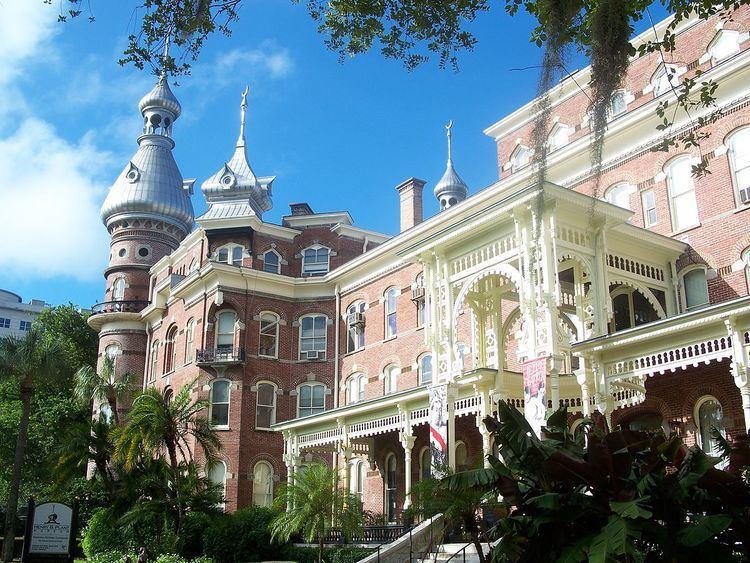Name J. Wood | ||
 | ||
John A. Wood (June 11, 1837 – December 18, 1910), known as J.A. Wood, was an architect in the United States. His work in upstate New York included projects in Poughkeepsie and Kingston, New York as well as three armories, in Kingston, Bethel, New York, and Watertown, New York. His work in Tampa, Florida includes the Tampa Bay Hotel and old Hillsborough County Courthouse. His hotel work included the design of the Piney Woods Hotel, Oglethorpe Hotel, Mizzen Top Hotel, and Grand Hotel.
Contents
Wood was born in Bethel, New York. He began his career in 1863 in Poughkeepsie before moving his office to 153 Broadway in New York City. He completed several projects in the area of Kingston, New York as well as in Brunswick, Georgia.
Wood's parents were Stephen C. Wood and Mary Crist Wood. Wood is buried in the Evergreen Cemetery in Bethel.
The Tampa Bay Hotel was listed on the National Historic Register in 1972.
Kingston, New York and Poughkeepsie
Wood established his practice in Poughkeepsie by 1863. the buildings he designed in the area include several on and around the Vassar College campus. He also did work in Kingston, New York, including the New York State Armory (1878) and, at the end of his career, the Stuyvesant Hotel (1910). He also designed the Tremper House by Mount Tremper (constructed for wholesale grocery businessmen Thomas and Jacob Tremper), one of the earliest railroad resorts in the Catskill Mountains. It was located by the Phoenicia stop of the Ulster and Delaware Railroad.
Other work
Hotel design became his specialty and Wood achieved a reputation for his architectural style, especially his use of Moorish Revival style. The Tampa Bay Hotel is his most famous work, a striking five-storied, 511-room building with ornate Victorian architecture features (sometimes referred to as gingerbread), as well as Moorish architectural features including minarets, cupolas, and domes. The resort was built for Henry B. Plant, a railroad and shipping tycoon. It is now part of the University of Tampa campus and is known as Plant Hall. It contains the Henry B. Plant Museum.
Wood stated his dislike for Queen Anne style in the Thomasville Times in 1886: "Dear Sir – Please correct the statement in Saturday’s Times that the ‘Piney Woods Hotel is built in the Queen Anne style.’ Neither the Piney Woods nor any other hotel that I have ever designed is in that beastly style, which is at best no style at all."
Wood's design for the Grand Hotel (Highmount, New York) was a project for Thomas Cornell, owner of Hudson River steamships and the Ulster and Delaware Railroad. Cornell concluded that a hotel near the railroad would boost traffic and draw wealthy clients who would be hours away from Grand Central Station in New York City. The three-story hotel included elegant features such as turrets, and a covered piazza along its 350-foot length.
Wood's design for a large hotel in Charleston, South Carolina was covered by The New York Times in a January 6, 1894 article.
Projects
Newburgh Free Library in Newburgh, New York
